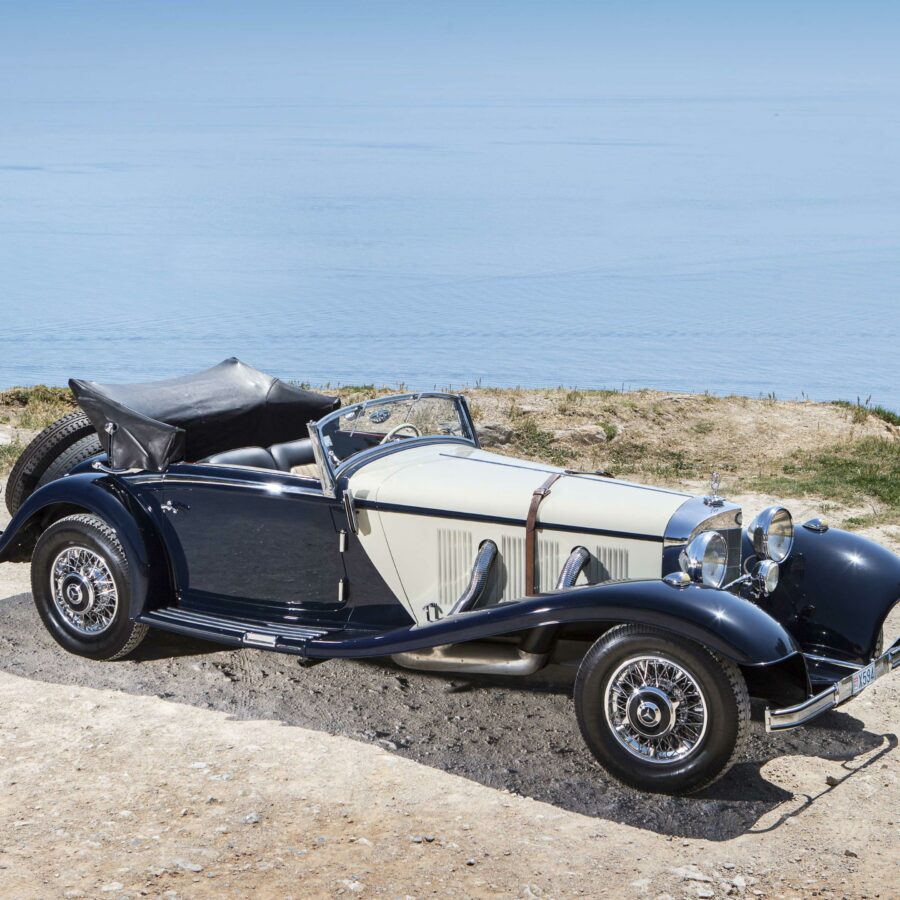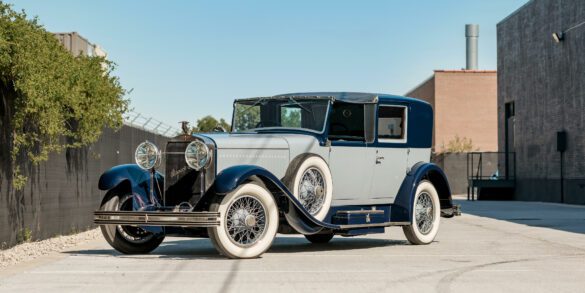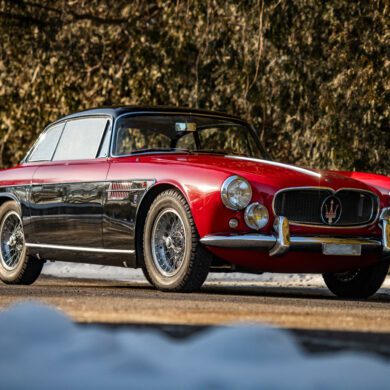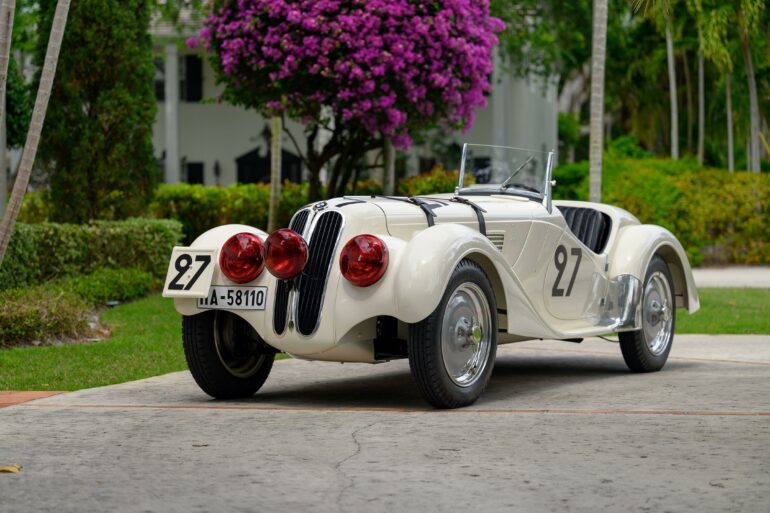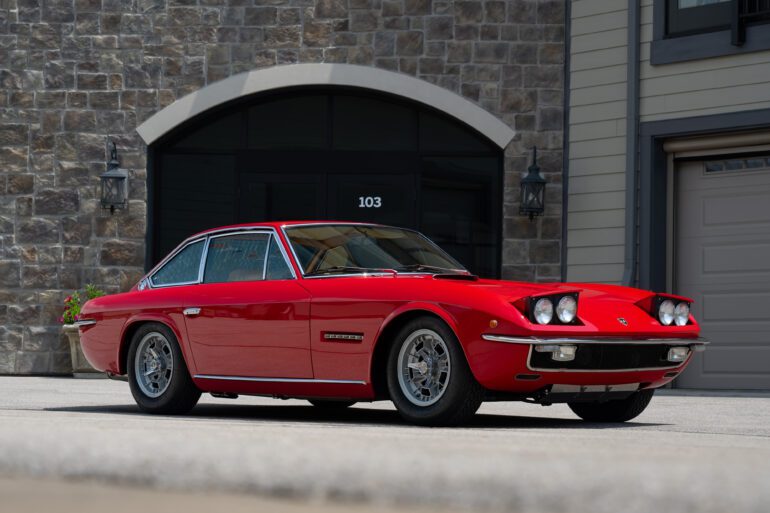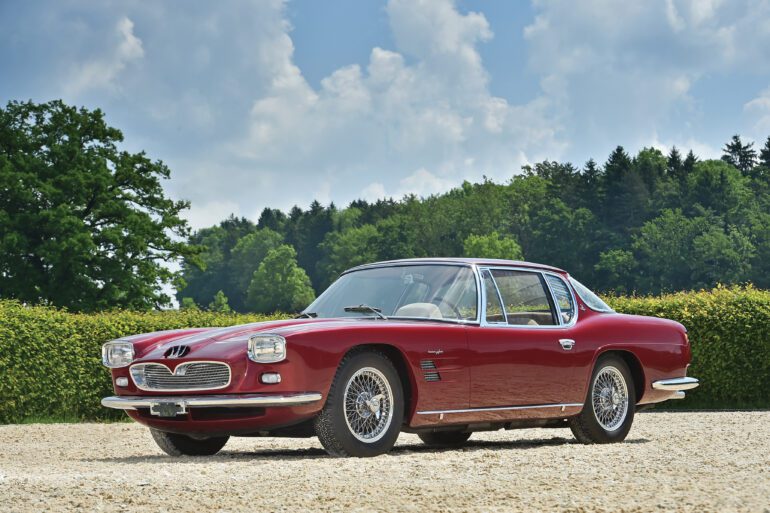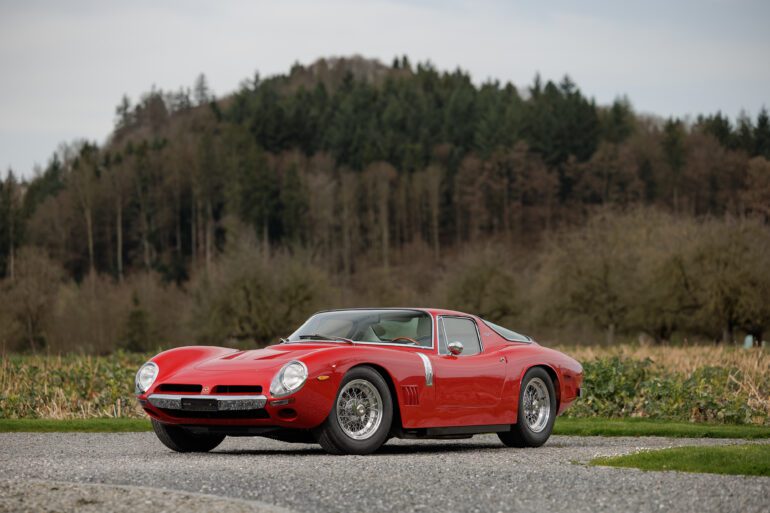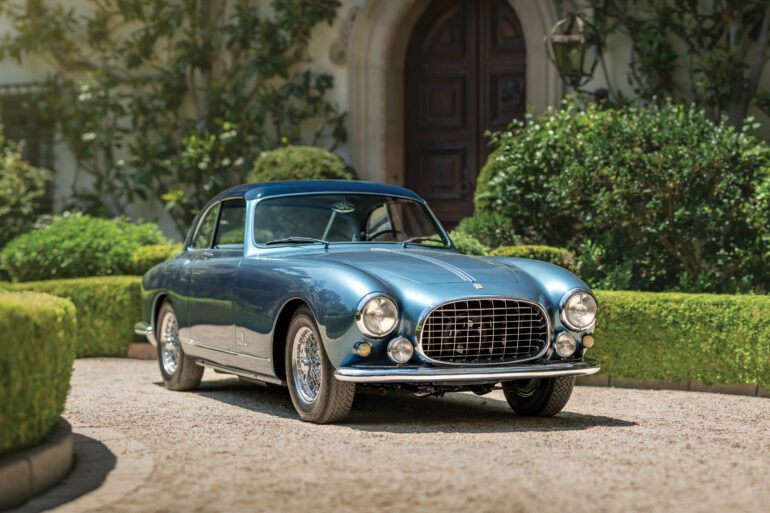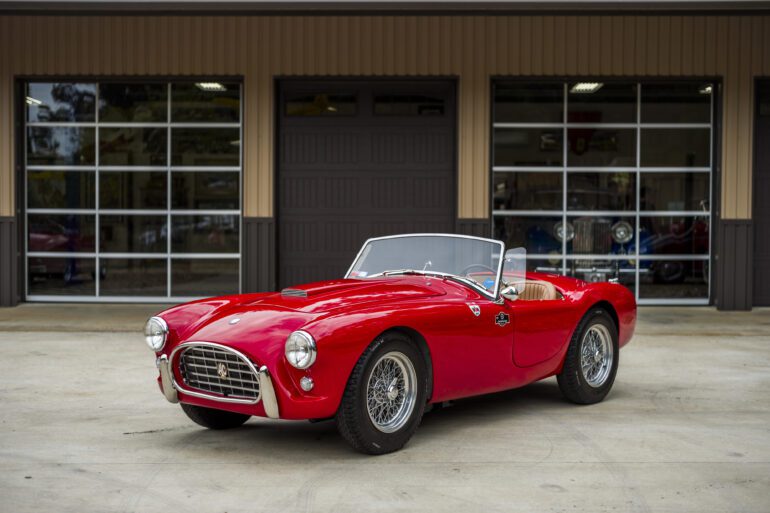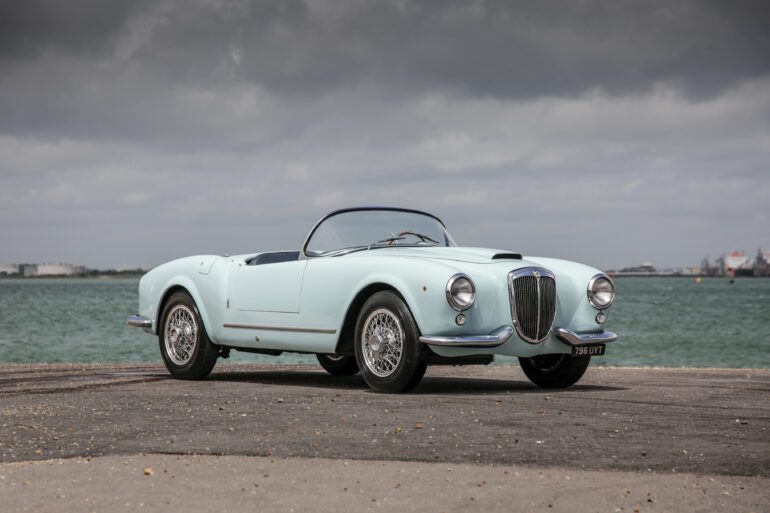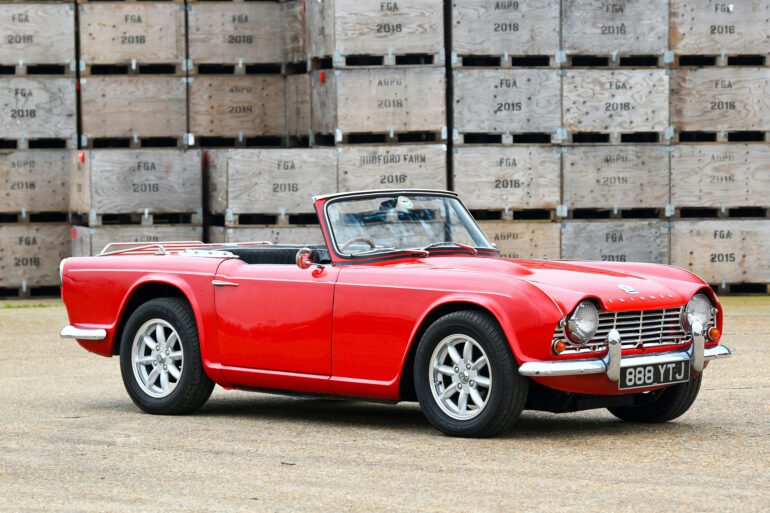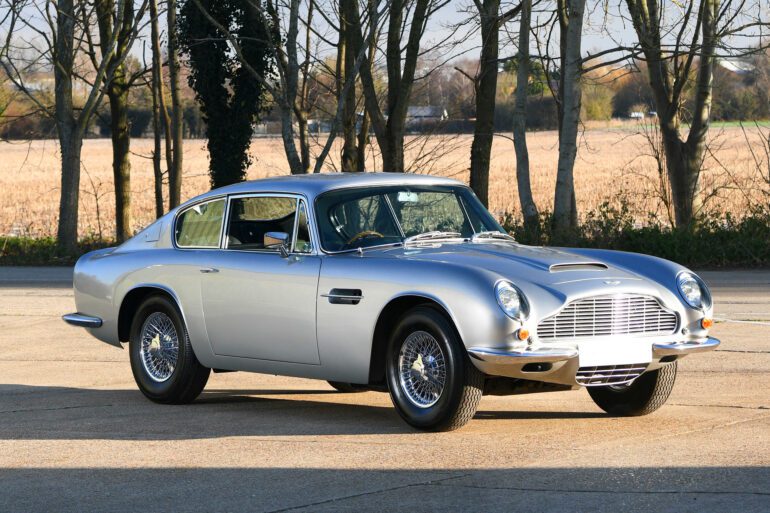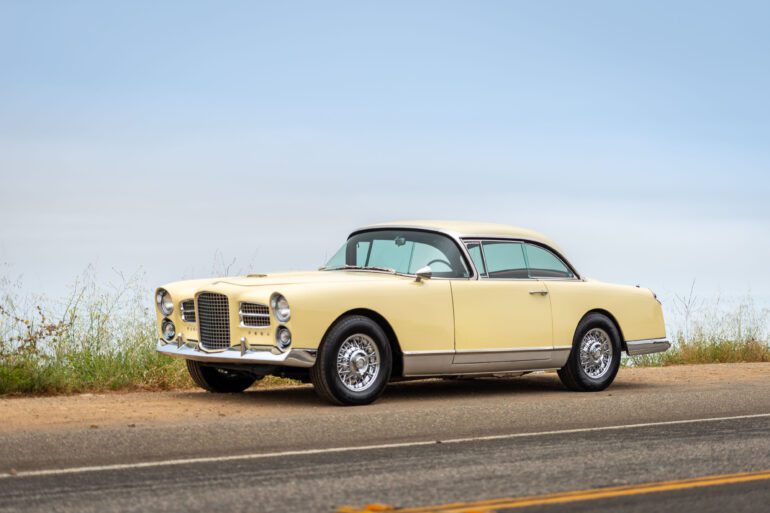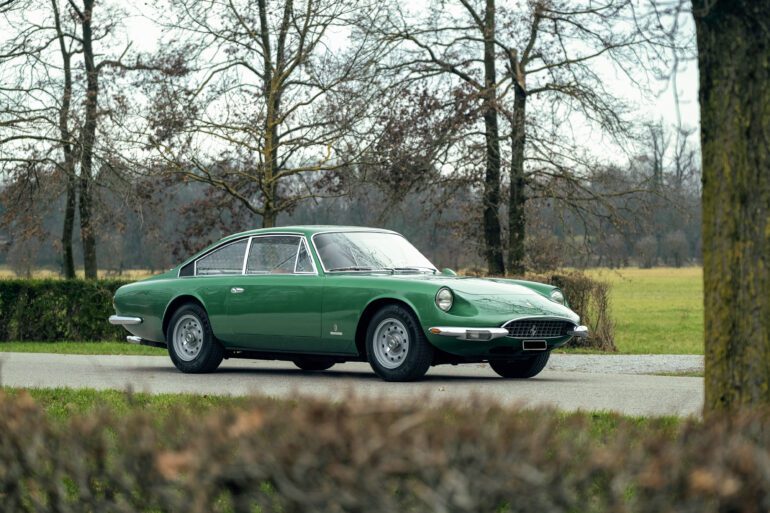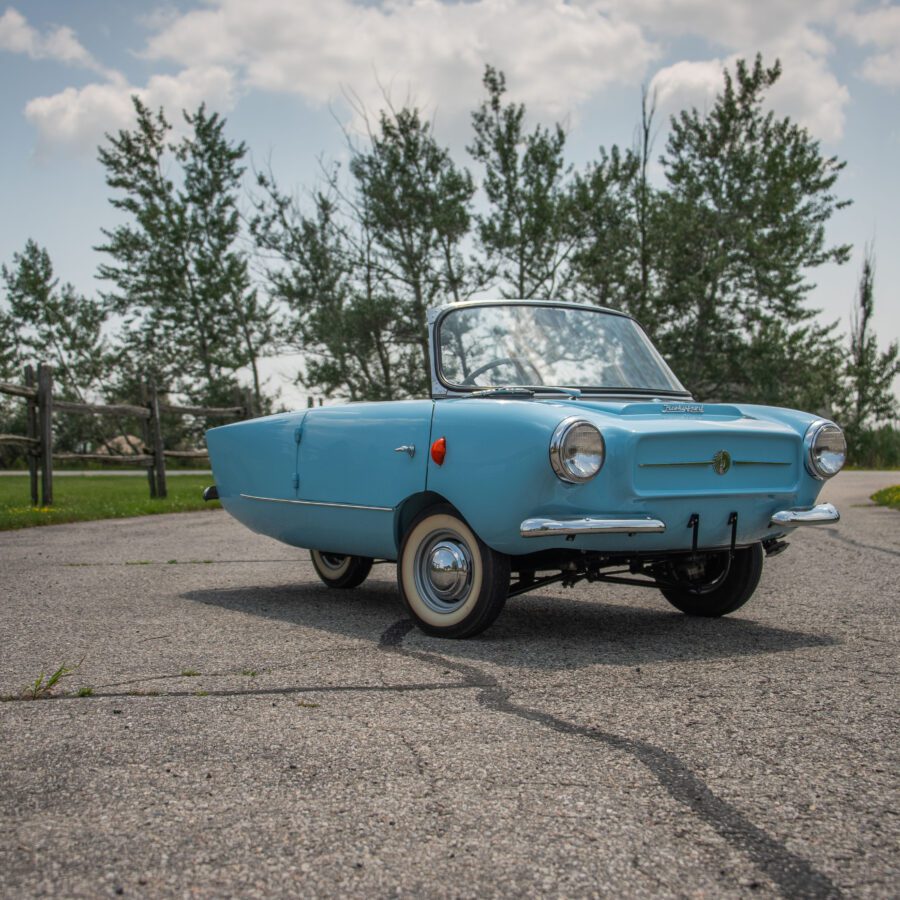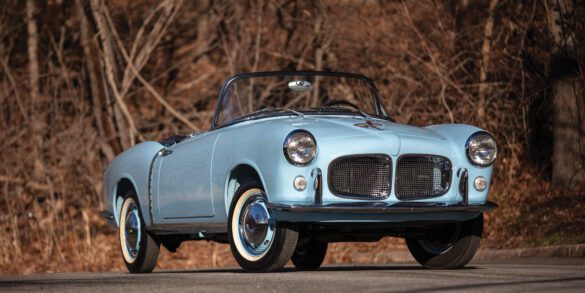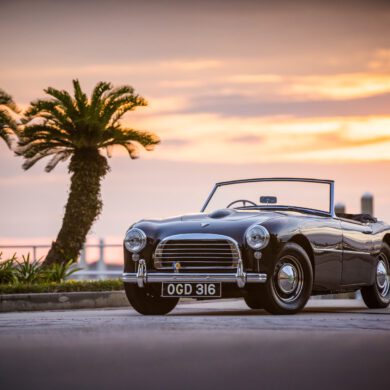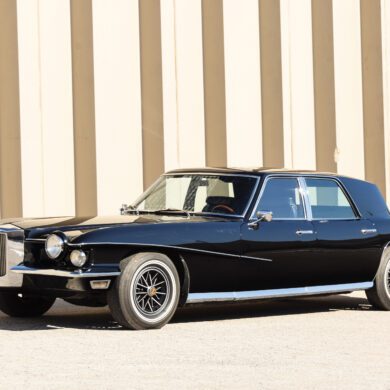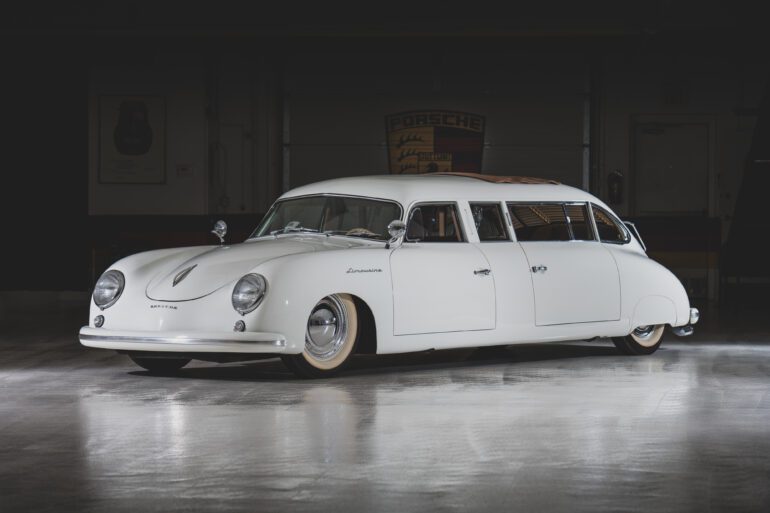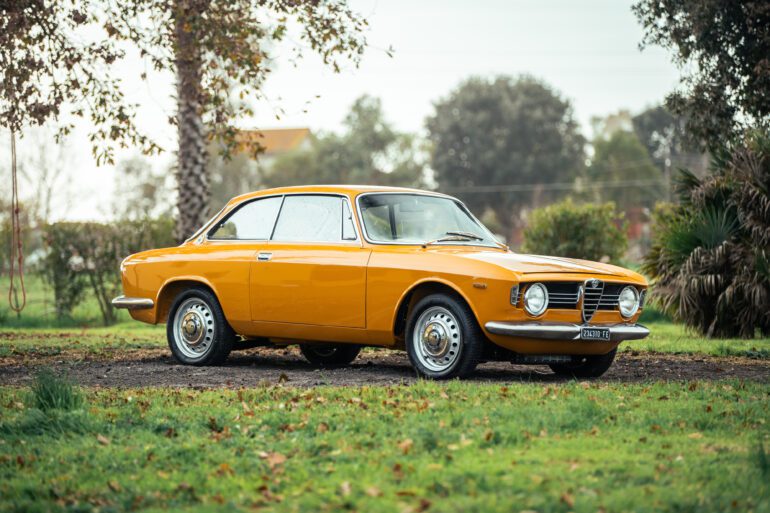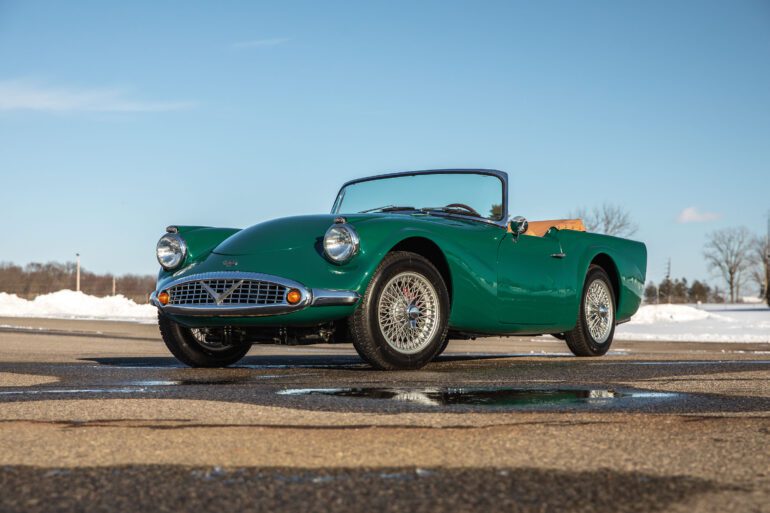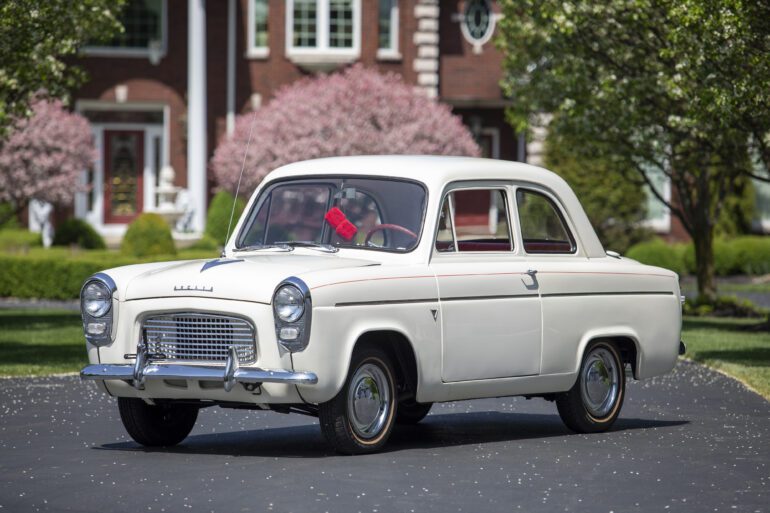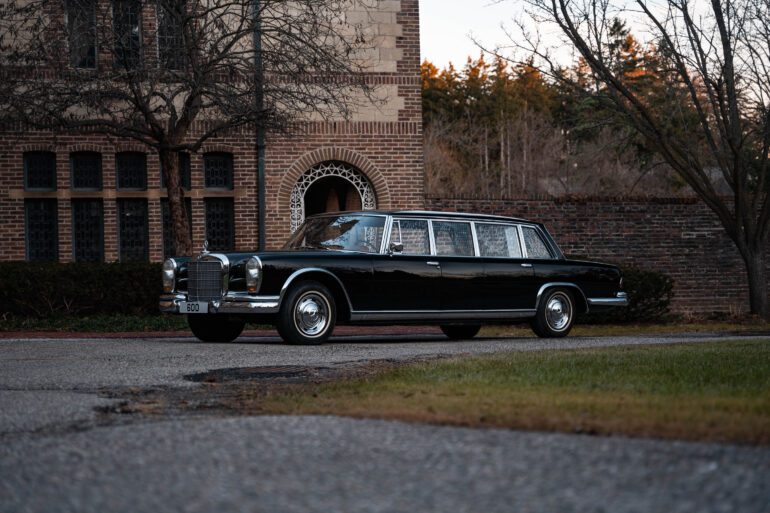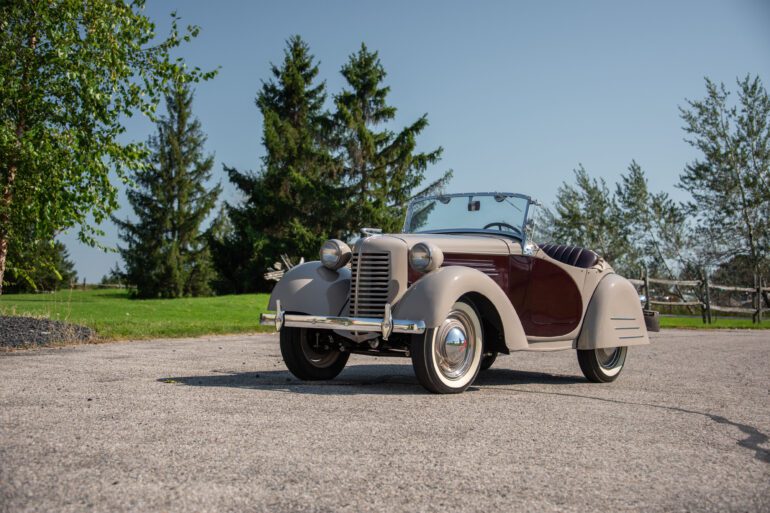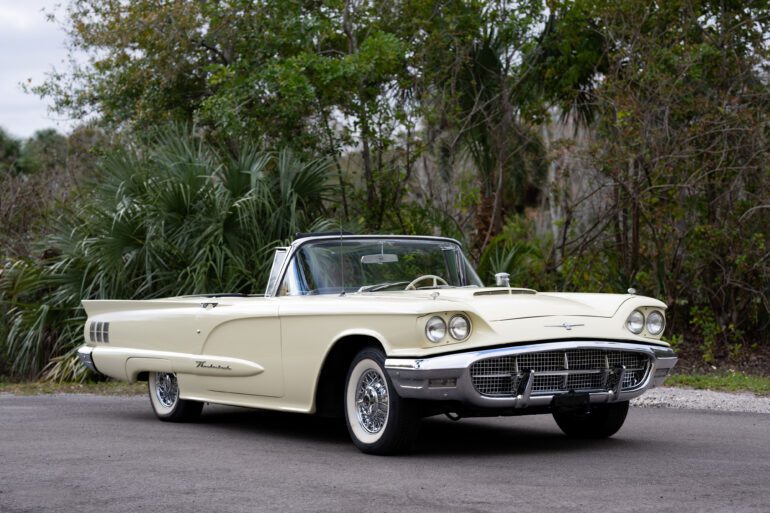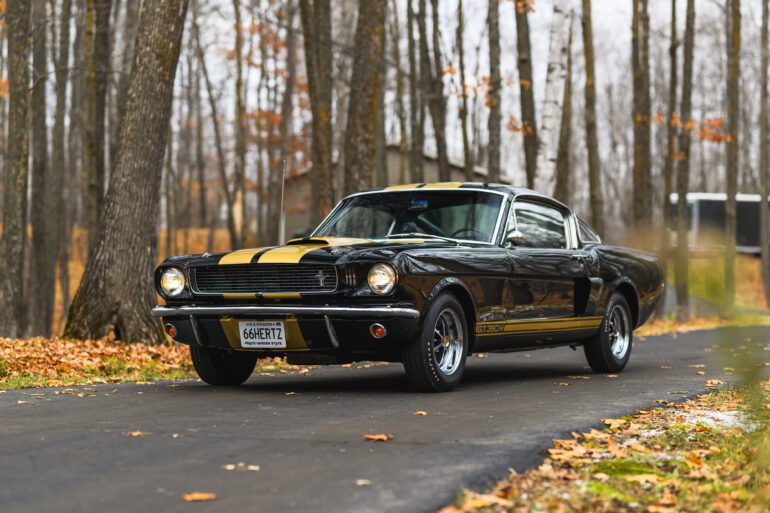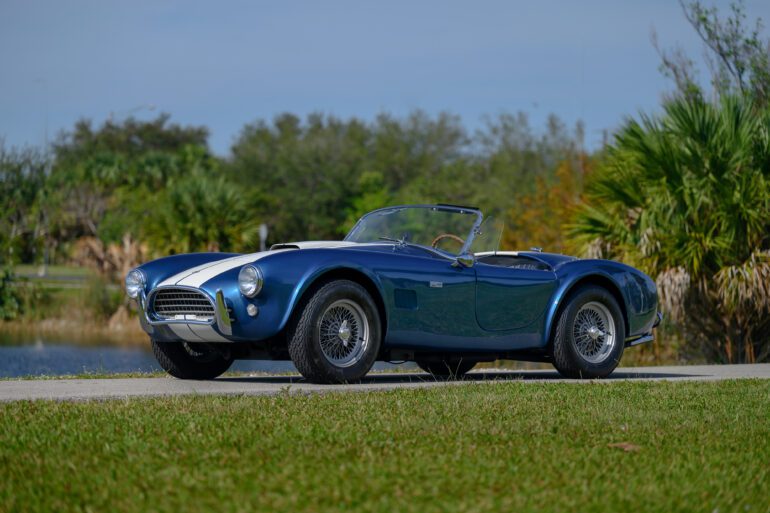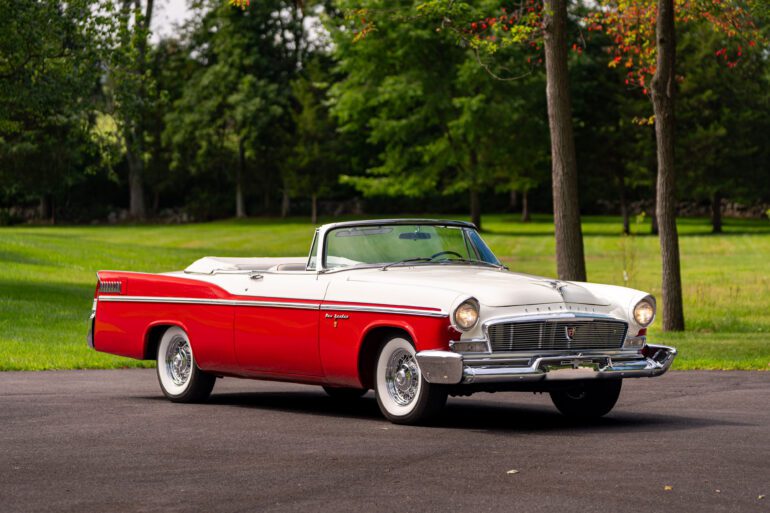Your Destination for Classic Collector Vehicles, Muscle Cars, Hot Rods, Street Rods, Vintage Trucks and More.
The BMW 328 wasn’t just a top-tier sports car for enthusiasts; it dominated the 2-liter sports car racing scene across Europe from 1936 to 1940. Owning anything other than a 328 during this period likely meant little chance of victory. With 131 recorded wins, 45 gold medals, and numerous podium...
Debuting at the 1968 Geneva Salon, the Islero evolved from the 400 GT 2+2, itself a descendant of Lamborghini’s first production vehicle, the 1964 Touring-styled 350 GT. Designed by esteemed engineers Giotto Bizzarrini, Gian Paolo Dallara, and Paolo Stanzani, the 350 GT boasted a magnificent 3.5-liter four-cam V12 engine and...
The Maserati 5000GT, a car fit for royalty, originated from a direct request by the Shah of Iran, seeking a potent and exclusive GT vehicle based on the four-cam V-8 engine of the 450S sports racer. Promised within four months, the initial model was to be crafted by Touring of...
After influential roles at Alfa Romeo and Ferrari, where he spearheaded the creation of the iconic 250 GTO, Giotto Bizzarrini embarked on an independent path in 1962. He earned acclaim for his designs at Lamborghini, crafting their potent V12, and at Iso, where he collaborated on the Rivolta before launching...
Between 1951 and 1952, the Ferrari 212 left an indelible mark on the racing scene and the automotive market, with approximately 110 individual chassis finding their way into the hands of eager clients. This versatile model boasted a diverse array of body styles, ranging from lightweight spiders and coupés to...
In 1937, the Maserati brothers relinquished their stake to the Orsi Group, paving the path for Officine Specializzate per la Costruzione Automobili Fratelli Maserati, or OSCA. Driven by a passion for racing, they sought to create bespoke competition cars, distancing themselves from the burgeoning road car industry. OSCAs soared in...
The DeSoto, distinct from its short-lived Edwardian predecessor, debuted in 1929 under Chrysler Corporation’s umbrella, aiming to fill the gap between upscale Chrysler and the new Plymouth. Despite an impressive launch with record-breaking sales lasting three decades, DeSoto struggled amidst Chrysler’s efforts to streamline its brands, overshadowed by Dodge’s affordability...
Anthony Lago’s mechanical ingenuity breathed new life into Talbot, revitalizing its presence on circuits and redefining its image. The Talbot T26 GS claimed victory at the Le Mans 24 Hours in 1950, signaling a resurgence for the marque. Concurrently, Lago adapted racing models for civilian use. The GSL, designed by...
Cliff Davis’s successful Tojeiro sports racer led AC Cars to mass-produce the design in 1954, naming it the Ace. Retaining the elegant Ferrari 166-inspired barchetta bodywork and John Tojeiro’s chassis, it featured AC’s 2-liter six-cylinder engine, initially delivering 80bhp. Later, the Bristol 2-liter six-cylinder engine, renowned for its superior performance,...
Lancia’s Aurelia B10 berlina, unveiled at the 1950 Turin Motor Show, marked the brand’s post-war return. Despite its unremarkable exterior, it pioneered groundbreaking technology, evolving through six series over eight years to become the archetype of modern Gran Turismo cars. Led by Vittorio Jano and Francesco de Virgilio, the Aurelia...
In the mid-1950s, Rolls-Royce embraced series production with the Silver Cloud series to stay competitive. The Silver Cloud Standard Steel Saloon, designed by J.P. Blatchley, modernized the classic Silver Dawn. Its factory body became immensely popular, remaining virtually unchanged for over a decade. Despite waning demand, Rolls-Royce engaged both external...
The TR4, introduced in 1961, marked the initial shift in TR’s evolution from a rugged, straightforward sports car to a more refined model. Designed by Giovanni Michelotti, the TR4 boasted a modern bodyshell that updated its styling, complemented by numerous chassis enhancements. Key improvements included rack-and-pinion steering, widened front and...
In 1958, Aston Martin debuted the DB4, initiating a prestigious lineage culminating in the DB6, produced from 1965 to 1969. General manager John Wyer’s pivotal decision to enlist Italian styling expertise from Touring of Milan rather than relying solely on in-house design significantly contributed to the DB4’s acclaim. The foundational...
In March 1958, MG’s Abingdon factory began production of the Sprite, a sports car designed by Donald Healey with the aim of democratizing sports car motoring. The Sprite’s unitary construction bodyshell boasted a distinctive rearward-hinging combined bonnet and wings, crowned by two iconic ‘frog eye’ headlamps, instantly earning it a...
Facel, a French luxury car manufacturer, left an indelible mark with its exclusive line of vehicles, creating approximately 2,900 cars renowned for their luxury, speed, and bespoke craftsmanship. Among them, the Facel Vega HK500 stood out, commanding prices that are on the Rolls-Royce territory and attracting a clientele of elite...
The 1970 Challenger marked Dodge’s late yet thrilling entry into the muscle car arena, spurred by the success of the Ford Mustang’s debut in 1964, appealing particularly to younger demographics. Priced slightly higher than its Plymouth Barracuda counterpart, which had already established its presence akin to the Mustang, the Challenger...
Introduced in 1965 as Plymouth’s premier model in the mid-size Belvedere lineup, the Satellite debuted with Chrysler’s renowned ‘Hemi’ 426ci (7.0-liter) V8 engine in 1966. Adding approximately $1,000 to the base price, this ‘Street Hemi’ engine purportedly generated 425bhp at 5,000rpm and 490lb/ft of torque at 4,000 revs, though these...
By the mid-1960s, Ferrari responded to market demands with half of its production featuring four seats. Following the success of the 1960 250 GTE, Ferrari unveiled the 330 GT 2+2 in January 1964. With a longer steel tube chassis compared to its predecessor, the 330 boasted independent front suspension and...
In the sea of somber pre-war British saloons, the Lagonda LG45 Rapide emerged as a stunning anomaly, its sleek contours, squared radiator, and distinctive exterior features setting it apart. Crafted by the visionary Frank Feeley, who later shaped the iconic Aston Martin DB2, the Rapide exuded boldness and elegance, capturing...
The Mercedes-Benz 280 SE 3.5 epitomizes exclusivity in the classic car realm. Priced at $13,500 in 1970, it surpassed its sedan counterpart by $3,500 and even doubled the cost of a Cadillac Deville Coupé, making it a rare luxury choice. Introduced in September 1969, the 280 SE Coupé/Cabriolet and 300...
Porsche’s journey from inception to producing a four-door sports car spanned nearly eight decades, with limousines not even a consideration in 1950s Zuffenhausen. However, a bespoke 356 limousine crafted for special occasions offers a glimpse into an alternative reality where Porsche explored different automotive avenues, diverging from its sports car...
Alejandro De Tomaso embarked on his racing journey in Argentina in 1951 before transitioning to Italy to drive for Maserati and OSCA, the latter founded by the Maserati brothers post-sale. Inspired by this rich racing experience, De Tomaso established De Tomaso Automobili in Modena, Italy, in 1959. Initially, the company...
Alfa Romeo revolutionized the automotive landscape with the 1.3-liter 750-Series Giulietta in 1954, epitomizing the ethos of ‘small car, big performance’ that would define the brand’s finest offerings. This formula persisted through subsequent iterations, including the improved 101-Series from 1959 and the transition to the Giulia range in 1962. While...
The Mangusta, one of the pioneering supercars, marked De Tomaso’s entry into the automotive scene in 1967, solidifying the company’s reputation. Alejandro De Tomaso’s racing background in Argentina, followed by stints with Maserati and OSCA in Italy, fueled his ambition to establish De Tomaso Automobili in Modena, Italy, in 1959....
Unveiled at the 1966 Turin Motor Show, the Ferves Ranger emerged as an unusual Italian interpretation of the compact off-roader concept. Designed by Carlo Ferrari, its name originates from the acronym FERrari VEicoli Speciali (“Ferrari Special Vehicles”). Combining features from the Fiat 500 and Fiat 600, the Ranger boasted an...
A surprising departure from its renowned lineup of luxury limousines, the SP250 sports car marked Daimler’s swan song before its acquisition by Jaguar. Geared towards the North American market and unveiled in 1959, the SP250 adopted a distinct approach, featuring a separate ladder-type chassis supporting fiberglass bodywork controversially manufactured in-house...
Racing driver Sydney Allard undertook a remarkable project, melding a wrecked Ford V8 coupe with the body of a Grand Prix Bugatti, crafting one of the most unconventional pre-war trials specials. Despite its unusual origins, the Allard Special showcased the potential of pairing lightweight construction with a potent American V8...
A chance meeting in 1949 between Donald Healey and George Mason, head of Nash-Kelvinator, led to the expansion of the Warwick-based company’s lineup with a new model exclusively for the US market – the Nash-Healey. Marrying Nash’s 234.6ci (3.8-liter) overhead-valve six engine and three-speed/overdrive gearbox with the chassis of the...
In 1992, Renault introduced the innovative Racoon, a concept car designed with amphibious capabilities. Sporting a twin-turbocharged V6 engine, manual transmission, and all-wheel drive, its unconventional entry required lifting the front, devoid of traditional doors. This unique feature highlighted its futuristic design. Equipped with adjustable ground clearance, the Racoon utilized...
During the formative years of the American automobile industry, inventor-engineers drove its development, but the interwar period witnessed a shift, with entrepreneurs like Errett Lobban Cord shaping its trajectory. Cord’s early financial rollercoaster, experiencing gains and losses of $50,000 three times before 21, epitomized his daring spirit. When Cord assumed...
Ford made a significant transition by adopting an overhead-valve engine for its smallest family sedan, debuting with the Anglia 105E in September 1959. Featuring a compact 997cc four-cylinder engine with an ultra short-stroke design, it displayed a remarkable affinity for high revs and boasted ample tuning potential, exemplified by its...
By the dawn of the 1960s, Mercedes-Benz had expanded its model range substantially, yet one crucial segment remained unaddressed: the realm of ultra-luxurious saloons to rival the esteemed Grosser Mercedes of yesteryears. This void was elegantly filled in September 1963 with the unveiling of the brand new 600 at the...
Rarely in the annals of manufacturing history has there been a figure as steadfast in their belief in a product as Roy Evans. Despite the initial setback of the diminutive American Austin in 1934, Evans remained resolute. By 1937, he introduced a revamped and modernized rendition, christened the American Bantam,...
The Cobra, hailed as a timeless classic among sports cars, captivated enthusiasts with its powerful performance and captivating design. Originating from Texan Carroll Shelby’s racing ventures in late 1950s Europe, the Cobra was born from his insight into marrying a lightweight American V8 engine with a proven European chassis, a...
Ferdinand Piech, a highly skilled engineer and nephew of Porsche’s founder, spearheaded the development of the Porsche 906 Carrera 6 competition coupe. Taking charge of the experimental department in 1966, Piech’s relentless drive propelled Porsche’s racing advancements. The Carrera Six, succeeding the successful 904 GTS racecar of 1964-65, prioritized significant...
The iconic Miura set an incredibly high standard, making the debut of its successor, the Countach, a surprising revelation at the 1971 Geneva Salon. Styled by Marcello Gandini of Bertone, the Countach’s design was nothing short of extraordinary, resembling something out of this world. Initial reactions were skeptical, with many...
Debuting in October 1954 to rival Chevrolet’s Corvette, the Thunderbird quickly became an automotive icon. Initially offered as a two-seater “personal car,” it targeted younger, style-conscious buyers and outperformed the Corvette due to its superior V8 engine and refined characteristics. However, in 1958, Ford expanded the Thunderbird lineup with the...
Ford revolutionized the automotive landscape with the sudden unveiling of the Mustang Sports Coupe midway through the 1964 season, catching competitors off-guard. Conceived by Lee Iacocca, later credited with rescuing Chrysler Corporation, the Mustang stands as a testament to his illustrious tenure at Ford. Renowned Texan racer Carroll Shelby had...
A.C. Cars, Ltd., a distinguished British automaker tracing its roots back to 1908, transitioned from producing small delivery vehicles to crafting sports cars in the 1920s. After World War II, they briefly diverted to manufacturing invalid cars before introducing the Ace in 1954—a revolutionary tube-frame car with advanced independent suspension...
Introduced as a Chrysler Imperial submodel for the 1938 model year, the New Yorker emerged as its own standalone model in 1940. Positioned as an upscale vehicle, it commanded a price slightly above $1,200, equivalent to around $26,000 in today’s currency, and directly competed with select Buick and Oldsmobile models....


